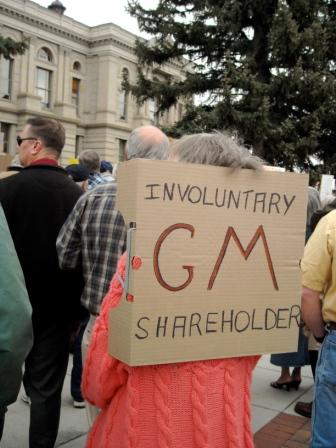GM IPO Roadshow To Begin The Day After Elections
Looking for proof that politics are an overriding concern for GM during its forthcoming IPO: look no further than a report by Reuters which claims that
GM’s roadshow is set to begin on Nov. 3 and will last two weeks, the sources said. The IPO is expected to price on Nov. 17 and debut on Nov. 18.
Now why would GM wait until the day after midterm elections to file? Well, it could be so GM has time to file 3rd Quarter financial data before offering shares to the public, but GM’s CFO has already warned that 3rd Quarter results will be worse than results from the first half of the year. In other words, waiting to file is likely to materially hurt the IPO (and taxpayers’ chance of payback). But if GM launches its roadshow the day after elections, it won’t turn the midterm election into a referendum on the auto bailout, a situation that would surely exacerbate the already-strong anti-incumbent trend in American politics. And clearly protecting craven pols is far more important than maximizing the return on “investment” for taxpayers, right?
On the other hand, the IPO’s timing might not even matter so much. After all, estimates of a $20b+ IPO are proving to be as unrealistic as we’ve always thought. According to Reuters
The final value of the IPO has not been set but one source said early plans for the IPO envisioned selling $12 billion to $16 billion in common stock and $3 billion to $4 billion in preferred stock that would convert to common stock under a mandatory provision.
And why not? Gaskin’s Iporeport on the GM offering notes that “Investors don’t like surprises,” and GM has offered plenty of unpleasant surprises. FOr example, the fact that Ed Whitacre appeared in several GM commercials led investors to believe that he would stay around post-IPO, and his recent decision to step down is hardly reassuring. Furthermore, the government and GM are clearly not on the same page, as Whitacre suggested an all-in IPO that the Treasury clearly wasn’t behind. Declining market share, “one time” gains in the first half, the Volt’s many issues, and concerns about new CEO Dan Akerson all make Gaskin’s list of worries. The conclusion:
GM should trade at a discount to Ford which means a 50% loss on the government’s “investment.”
Which, in turn, hurts GM’s chances of future success. If GM is worth less than the $50b the taxpayers invested in it, it will be almost impossible to claim that the bailout was reasonably successful. Which also helps explain why the roadshow won’t start until after elections. Like the bailout itself, GM’s IPO is turning out to be another fear-based play in which preserving the status quo (politically this time, rather than economically) overrides any other concern, such as responsibility to taxpayers. Should we have expected anything else?
More by Edward Niedermeyer
Latest Car Reviews
Read moreLatest Product Reviews
Read moreRecent Comments
- ToolGuy 9 miles a day for 20 years. You didn't drive it, why should I? 😉
- Brian Uchida Laguna Seca, corkscrew, (drying track off in rental car prior to Superbike test session), at speed - turn 9 big Willow Springs racing a motorcycle,- at greater speed (but riding shotgun) - The Carrousel at Sears Point in a 1981 PA9 Osella 2 litre FIA racer with Eddie Lawson at the wheel! (apologies for not being brief!)
- Mister It wasn't helped any by the horrible fuel economy for what it was... something like 22mpg city, iirc.
- Lorenzo I shop for all-season tires that have good wet and dry pavement grip and use them year-round. Nothing works on black ice, and I stopped driving in snow long ago - I'll wait until the streets and highways are plowed, when all-seasons are good enough. After all, I don't live in Canada or deep in the snow zone.
- FormerFF I’m in Atlanta. The summers go on in April and come off in October. I have a Cayman that stays on summer tires year round and gets driven on winter days when the temperature gets above 45 F and it’s dry, which is usually at least once a week.


































Comments
Join the conversation
Yup, here we go. Ed crying about how the taxpayers got screwed by saving 300,000 jobs and 2 million elderly persons pensions and health care with a small $50 billion rescue. Yet, where was he crying when the banks stole $750 billion and then another $4 trillion after that? Nowhere. Because that bank rescue was a bailout of his trust fund and if that didn't happen, he would have to actually get a real job instead of sitting in front of the pool typing on his computer all day.